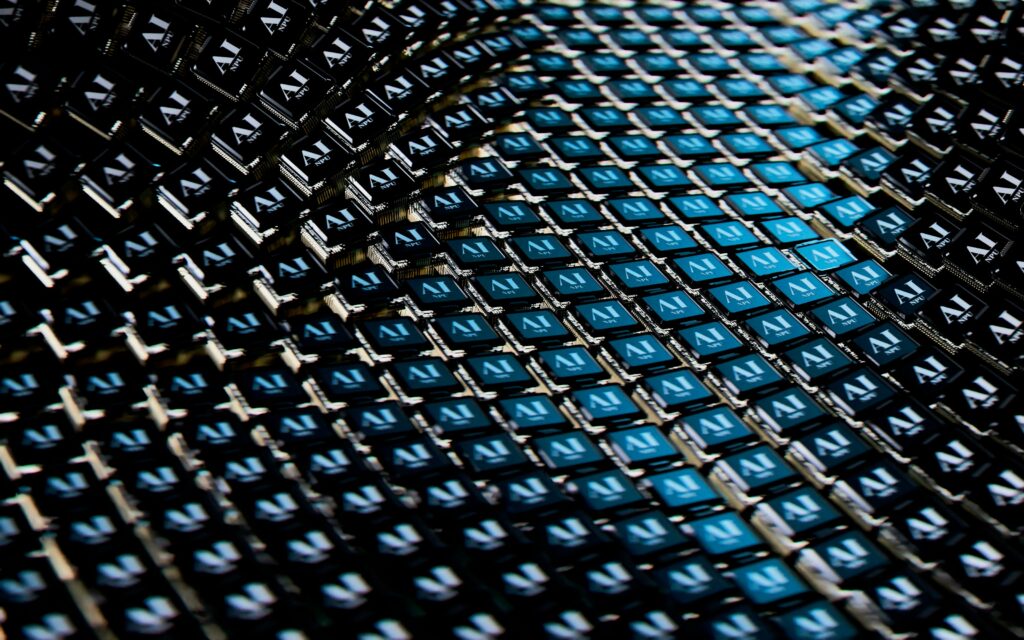AI-generated art is defined as graphics created utilizing powerful algorithms to approximate human ingenuity.
These neural network-powered algorithms learn from extensive collections of tagged photographs, allowing the system to create fresh and unique artwork.

AI-generated graphics are gaining traction in fields such as travel blogs, online poker sites, entertainment, advertising, and e-commerce because they produce eye-catching images that can be customized to meet specific demands
Using AI-generated website graphics increases user engagement by making the material more visually appealing and interactive.
Benefits of Using AI-Generated Images on Websites
Incorporating AI-generated graphics into your website can dramatically cut costs compared to traditional visual creation methods, making it excellent for small enterprises and startups on a tight budget.
These tools save money and significantly reduce the time required to complete projects such as marketing campaigns, presentations, and website upgrades.
AI-generated art provides adaptable, individualized images that outperform traditional stock photos.
Real-world examples demonstrate its advantages: a tech company reported increased reader engagement after utilizing AI graphics, while an educational organization noticed increased registrations after using more explicit AI-created promotional pictures.
These accomplishments show that AI-generated art improves user interaction, increases aesthetic appeal, and effectively aids brand-building efforts.
How to Choose the Best AI Image Generator for Your Website
Choosing the right AI image generator is critical for achieving optimal results.
When deciding, it is critical to evaluate various features, compare major generators, and consider pricing and accessibility.
To choose an AI picture generator that matches your specific needs, carefully consider these elements.
Evaluating Features
Customization is an important consideration when comparing AI image generators. For example, FLUX.1 allows users to change various factors before making photos, whereas Ideogram provides control via an image editor for bespoke creations.
User-friendliness is also vital, and systems such as Midjourney have introduced a dedicated homepage to boost accessibility.
Platforms like ImageFX make it easy for beginners to create outstanding images by simplifying the design and operating processes. Most notably, image quality is critical.
Midjourney is well known for creating visually pleasing graphics with consistent textures and colors. If your results are disappointing, adjusting your prompts can greatly improve the quality of your AI-generated photographs.
Pricing and Access Options
The cost of AI picture generators varies greatly, with platforms offering free plans, subscriptions, and pay-per-use options.
For example, Ideogram AI begins at $8 monthly after a restricted free plan, whereas DALLE 3 requires a $20 monthly subscription with free users limited to two daily photos.
Adobe Firefly offers 25 free credits each month, with additional credits starting at $4.99 for 100.
Midjourney’s subscription costs $10 monthly and includes up to 200 photos.
Free versions, such as Google’s Image Creator, frequently include limitations on usage and capabilities.
Integrating AI-Generated Images into Your Website Design
Using AI-generated images can significantly improve your website’s aesthetic appeal, efficiency, and SEO for AI images.
Discover how to use AI-generated graphics strategically to create a consistent, compelling, and well-optimized web presence.
Enhancing Visual Appeal
AI picture-generating algorithms generate visually appealing images from simple text descriptions, improving webpages’ appearance.
Tools like Shutterstock’s AI Image Generator may generate up to four images at once based on a language input, making them ideal for online apps.
DALLE 3 is lauded for its ease of use, cost-effectiveness, and ability to produce realistic images.
Adobe Firefly has tools such as Generative Fill and Expand, which allow users to change photos smoothly.
These tools not only improve the visual quality of websites, but they also increase engagement.
Optimizing for Performance
Maintaining fast loading times and reducing file sizes while maintaining image fidelity is critical when using AI-generated photos.
Using AI techniques that can expertly resize and compress these generated images, page load time can be increased without sacrificing visual quality.
Selecting appropriate file formats for AI-generated photos is critical in improving website performance.
With AI capabilities available to alter the size and resolutions of image content, faster loading across several devices is possible, significantly improving the user experience.
SEO Considerations
Using descriptive alt text for AI-generated photos greatly improves search engine optimization.
AI solutions can streamline creating alt text, improve SEO, and increase search engine content visibility.
Optimizing image file names and descriptive alt texts can improve search engine discoverability and rankings.
This ensures that your AI-generated image becomes valuable to your website’s overall SEO strategy.
Legal and Ethical Considerations
Understanding the copyright difficulties and ethical consequences of exploiting AI-generated photos is critical.
AI-generated photographs are subject to copyright rules that protect original creative works, though copyright attribution in such circumstances might be difficult.
This intricacy stems from concerns about authorship, as AI-generated creations lack a human creator.
Issues may also arise when copyrighted material is used to train AI systems, potentially breaking copyright laws.
Organizations that use AI-generated photos for commercial purposes must comply with copyright laws to avoid legal ramifications.
Determining whether an AI-generated image violates copyright requires thoroughly evaluating both the input data and the final image.
Understanding and abiding by the terms established by each AI picture generator is critical for assuring compliance with intellectual property regulations.
Ethical AI usage necessitates fair rewards for inventors and transparent development methods.
Furthermore, AI-generated photos might be used for illicit purposes, like identity theft or building fraudulent social media profiles.
Recognizing and addressing these ethical concerns is critical to properly using AI-generated content in today’s digital ecosystem.
Future Trends in AI-Generated Images for Web Design
With rapid developments, AI-generated art is expected to play a significant part in the future of online design.
Enhanced models are significantly improving the quality and authenticity of AI-generated photos.
These enhanced algorithms will allow for more exact modifications, better aligning AI-generated graphics with specific demands.
As we look ahead to the future of online design, multiple patterns indicate a greater reliance on artificial intelligence-generated pictures.
With the continual expansion of AI technology, innovations and advancements in AI-generated art can be expected, establishing it as a crucial resource for website creators.
